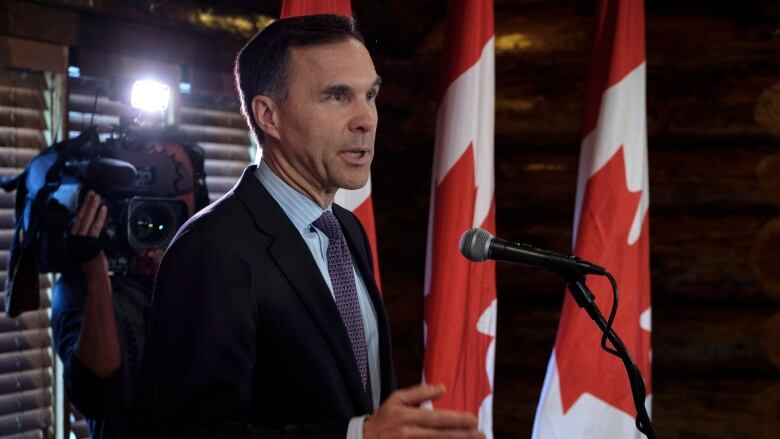How a shift in Ottawa's bookkeeping is going to make the deficit loom larger
The change will make the federal government's estimate of future pension costs more accurate

The deficit and debt numbers in the federal government's Annual Financial Report being released today will be higher than projected because of a significant accounting change Ottawa is making.
The federal government is changing how it calculates the sumsit's on the hook for in order to guarantee its future pension obligations to public servants, including RCMP and military personnel.
"We are modernizing our accounting to make it more businesslike, per the auditor general's recommendations," said a senior government official who spoke on condition he not be named. "It will better reflect the assets and liabilities down the road."
Since 2013, the auditor general has been talking tothe federal government about changing how it calculates the discount rate, which is used to value the current cost of future pension obligations.
When interest rates are low (as they have been in recent years), pension liabilities go up because the earning potential of those pension investments is reduced as a result. Low interest rates should mean a low discount rate but that hasn't been the case because, until now, the discount rate for unfunded pensions was based on a moving average of Government of Canada long-term bond rates.
Interest rates and pensions
A moving average takes into account past interest rates in Canada's case, that means higher rates leading to a higher discount rate.
Earlier this month, at a hearing ofthe House of Commons committee on government operations and estimates, MPs heard from experts on the issue.
"At the federal level, you still see these discount rates that are just based on history, on an assumption about return on assets" said Bill Robson, president and CEO of the C.D. Howe Institute. "To me, that makes no sense."
Critics like Robson argue that practice meant the government was underestimating its pension payments in the future.
"Those pensions are more valuable to their recipients than what the federal financial statements indicate, and they are correspondingly more costly to taxpayers," said Robson.
In the last two reports on the consolidated financial statements of the federal government, the auditor general has put into writing his fear that the discount rate has been too high.
Now, sources tell CBC that the Liberal government has decided to comply with that advice in time for today's Annual Financial Report.
Under the new approach, the discount rate will be based on the actual year-end interest rate of those Government of Canada bonds.
For this year, that means the discount rate will go from 3.9 per cent to 2.2 per cent.
"The amounts we are talking about wouldn't be material changes in the context of a federal budget," said the senior government official.
Others disagree. "This is a big adjustment," said Kevin Page, the former parliamentary budget officer who now heads the Institute of Fiscal Policy and Democracy at the University of Ottawa. "It would have a corresponding large adjustment on estimated long-term liabilities."
Discount rate goes down, deficit goes up
By the auditor general's assessment, a decrease of one per cent in the discount rate would increase the government's future pension obligations by $7.7 billion. A 1.7 per cent decrease wouldmean an increase in pension obligations of just more than $13 billion.
According to government sources, adopting the new discount rate will push the deficit for 2017-2018 to $19 billion, up from$18.5 billion. It will add $20.1 billion to the debt, pushing it to $671.3 billion.
And itwill increase the federal debt-to-GDP ratio from 30.4 per cent to 31.3 per cent. The Liberal government has made that ratio its key deficit yardstick for determining whether it is on track financially.
The Liberals also have based their financial plans on ensuring that ratio declines over time.
"We are still on track (for that)," said the government official.
Making the discount rate change now means that today's numbers will look worse than they would have without the change. But annual financial reports look backwards as well and the new rate will be applied to previous recorded bottom lines, including the previous Conservative government's much -touted $1.9 billion surplus in 2014-2015.
Today's annual financial report is expected to change that year's surplusto a $550 million deficit.
Government pensions are defined benefit plans, meaning when employees retire they are guaranteed a certain level of pension income based on their earnings.
Until 2000, those pensions were unfunded, meaning current and future benefit payments were reliant on government general revenues. Starting in 2000, the government started putting aside assets to fund the pensions. The discount rate accounting change applies only to the pre-2000 unfunded pensions.












_(720p).jpg)


 OFFICIAL HD MUSIC VIDEO.jpg)
.jpg)



























































































